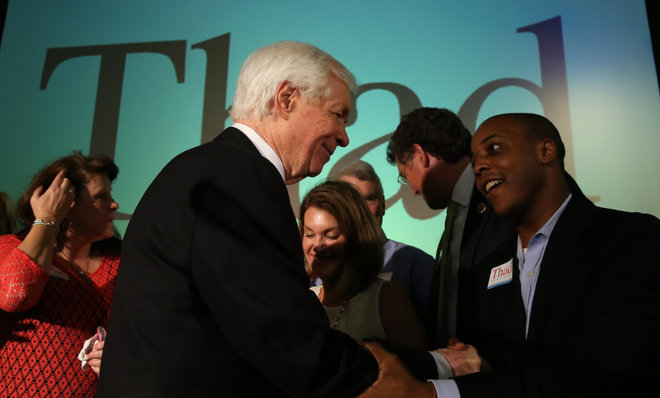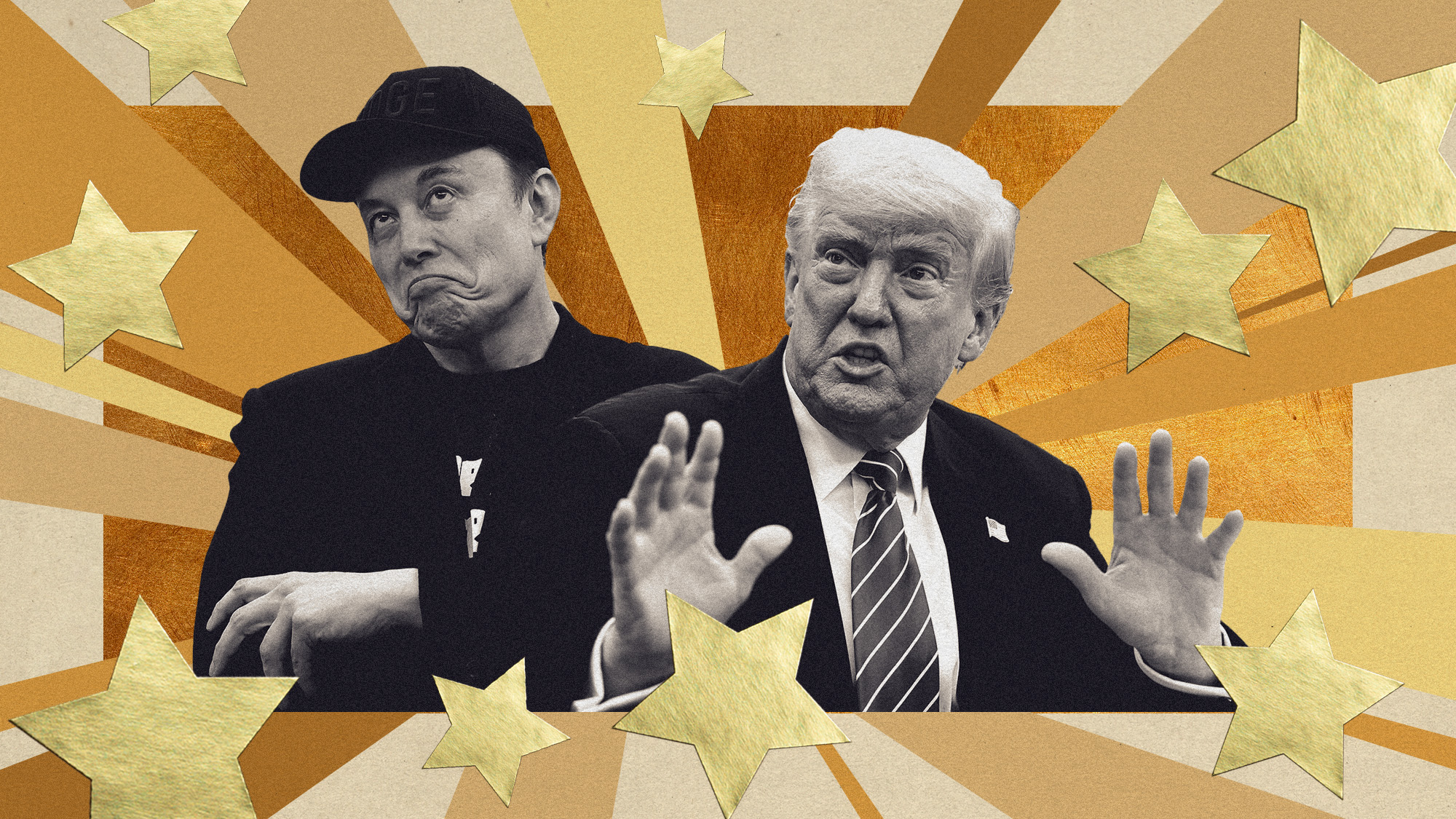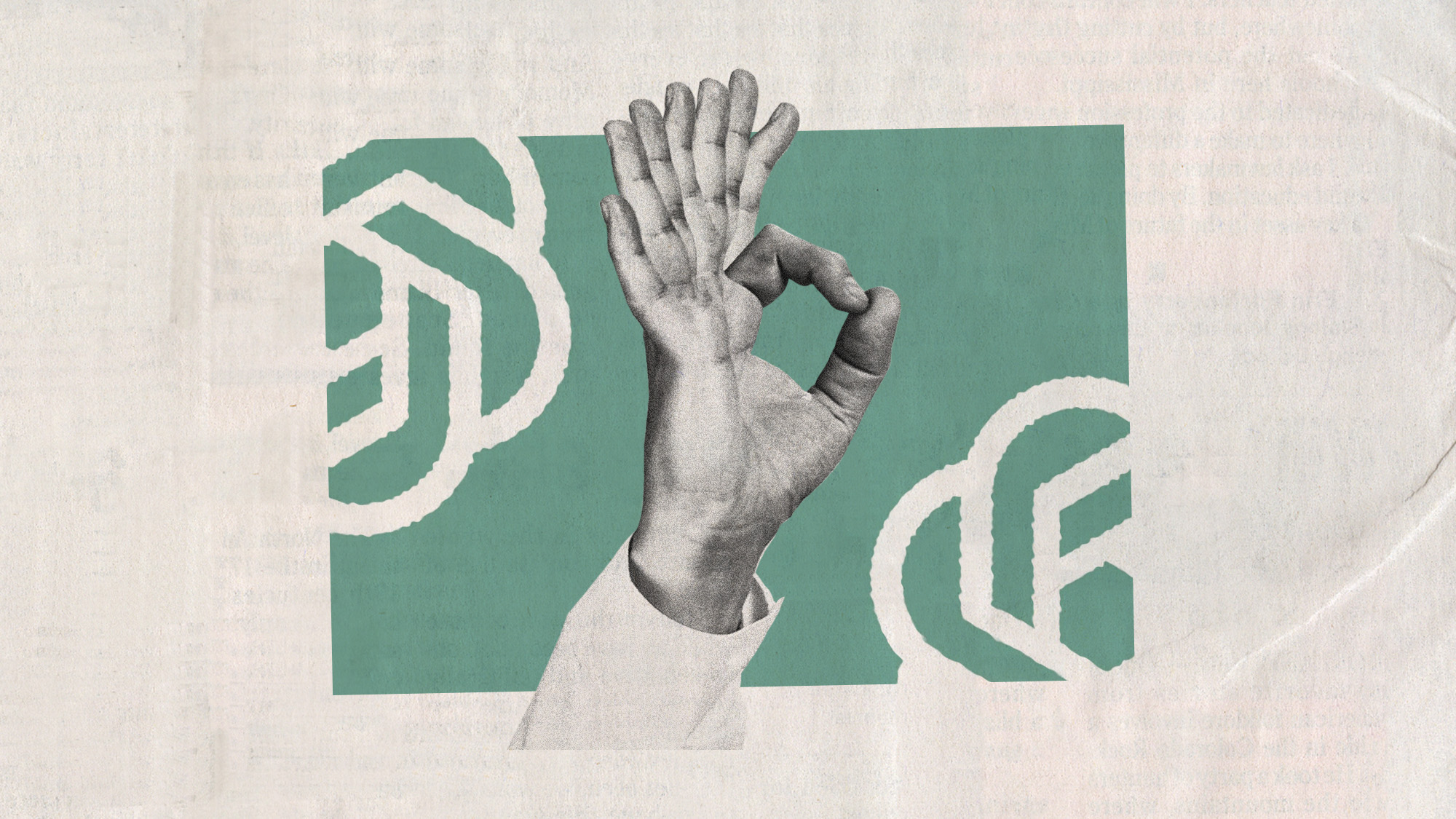Why black voters empowered Thad Cochran
A rare, but replicable Republican success


I don't think Sen. Thad Cochran's astounding demographic coalition in Mississippi will prove a once-in-a-red-moon phenomenon for Republicans. I also don't think it suddenly represents a turning point for the monochromatic elephants on a national scale. Instead, it's an election that follows an axiom: If you give people a real reason to vote for you, if the stars align, they might actually vote for you.
Thad Cochran's campaign knew, from polling and from, well, the air outside, that Chris McDaniel seemed like a good ol' boy. Kind of a reconstructed racist who is proud of himself for insisting he is not racist.
They also knew that black voters, being sensible to political realities, understand that the candidate who supported the policies they preferred, Democrat Travis Childers, is a long-shot to win.
The Week
Escape your echo chamber. Get the facts behind the news, plus analysis from multiple perspectives.

Sign up for The Week's Free Newsletters
From our morning news briefing to a weekly Good News Newsletter, get the best of The Week delivered directly to your inbox.
From our morning news briefing to a weekly Good News Newsletter, get the best of The Week delivered directly to your inbox.
So: what to do? How can black voters in Mississippi possibly exercise their power when Republicans are going to just win anyway?
Thad Cochran did not become a big-government loving Democrat. He just naturally extended his Big Government-loving-Republican-ness to the concerns of black voters. It wasn't that hard. Mississippi is a poor state, he argued. It needs help from the government. The poor need help. I won't back down from asking for, and fighting for, that help. Even to my Conference.
So the equation was this:
A Tea Partier who argues against government, whose most toxic comments were reserved for government programs that benefited blacks and the poor + a Democrat who had little chance of winning + African American voters who had a genuine chance to empower themselves this one time by voting for a Republican ...
A free daily email with the biggest news stories of the day – and the best features from TheWeek.com
That equals the five thousand or so extra votes that Thad Cochran needed.
Republicans are beginning to understand why Democrats became successful voter microtargeters before Republicans did, even though the same technology was available to both parties. Why? Because non-voters were willing to become voters in order to vote certain Democrats into office. Because Democrats figured out how to convince non-voters that voting for Democrats, and for specific candidates in particular, was worth their time. Because Democrats learned that the key to microtargeting wasn't technology at all: it was persuasion. And persuasion had to rest on a foundation of reality. That reality: there were more reasons for people who didn't vote to vote for Democrats than to vote for Republicans. Democrats fielded much more attractive candidates for non-voters.
Democrats understood that "expanding the electorate" was not a top-down process. Yes, the structures were created by the traditional Big Money elites. But the young voters, Latinos, and black voters who turned out for Barack Obama in 2008 and 2012 turned out for Barack Obama. Obama gave them a reason to exercise the option to choose between two alternatives.
There are three steps to this kind of process. One: find an attractive candidate. The second: give people who traditionally do not vote a reason to vote. And finally, harness technology to microtarget. This sounds simplistic, especially as I write it. But it turns out that it is extremely hard to get people who don't regularly vote for someone to vote for someone. It takes time, patience, and money — and a willingness to listen.
Marc Ambinder is TheWeek.com's editor-at-large. He is the author, with D.B. Grady, of The Command and Deep State: Inside the Government Secrecy Industry. Marc is also a contributing editor for The Atlantic and GQ. Formerly, he served as White House correspondent for National Journal, chief political consultant for CBS News, and politics editor at The Atlantic. Marc is a 2001 graduate of Harvard. He is married to Michael Park, a corporate strategy consultant, and lives in Los Angeles.
-
 Alaa Abd el-Fattah: should Egyptian dissident be stripped of UK citizenship?
Alaa Abd el-Fattah: should Egyptian dissident be stripped of UK citizenship?Today's Big Question Resurfaced social media posts appear to show the democracy activist calling for the killing of Zionists and police
-
 Biggest political break-ups and make-ups of 2025
Biggest political break-ups and make-ups of 2025The Explainer From Trump and Musk to the UK and the EU, Christmas wouldn’t be Christmas without a round-up of the year’s relationship drama
-
 Why 2025 was a pivotal year for AI
Why 2025 was a pivotal year for AITalking Point The ‘hype’ and ‘hopes’ around artificial intelligence are ‘like nothing the world has seen before’
-
 Bari Weiss’ ‘60 Minutes’ scandal is about more than one report
Bari Weiss’ ‘60 Minutes’ scandal is about more than one reportIN THE SPOTLIGHT By blocking an approved segment on a controversial prison holding US deportees in El Salvador, the editor-in-chief of CBS News has become the main story
-
 Has Zohran Mamdani shown the Democrats how to win again?
Has Zohran Mamdani shown the Democrats how to win again?Today’s Big Question New York City mayoral election touted as victory for left-wing populists but moderate centrist wins elsewhere present more complex path for Democratic Party
-
 Millions turn out for anti-Trump ‘No Kings’ rallies
Millions turn out for anti-Trump ‘No Kings’ ralliesSpeed Read An estimated 7 million people participated, 2 million more than at the first ‘No Kings’ protest in June
-
 Ghislaine Maxwell: angling for a Trump pardon
Ghislaine Maxwell: angling for a Trump pardonTalking Point Convicted sex trafficker's testimony could shed new light on president's links to Jeffrey Epstein
-
 The last words and final moments of 40 presidents
The last words and final moments of 40 presidentsThe Explainer Some are eloquent quotes worthy of the holders of the highest office in the nation, and others... aren't
-
 The JFK files: the truth at last?
The JFK files: the truth at last?In The Spotlight More than 64,000 previously classified documents relating the 1963 assassination of John F. Kennedy have been released by the Trump administration
-
 'Seriously, not literally': how should the world take Donald Trump?
'Seriously, not literally': how should the world take Donald Trump?Today's big question White House rhetoric and reality look likely to become increasingly blurred
-
 Will Trump's 'madman' strategy pay off?
Will Trump's 'madman' strategy pay off?Today's Big Question Incoming US president likes to seem unpredictable but, this time round, world leaders could be wise to his playbook
